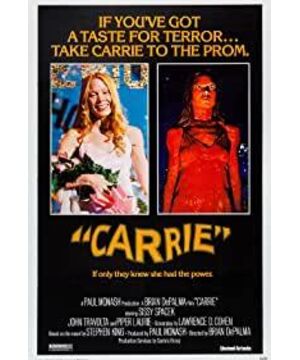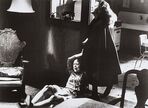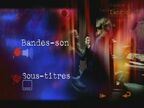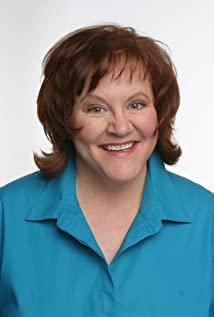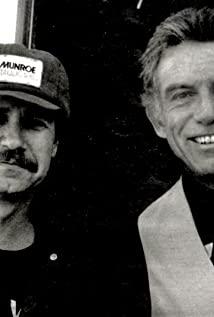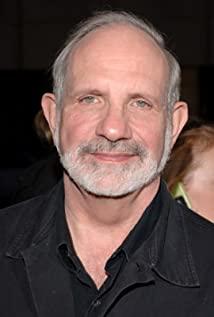"Witch Carrie" is adapted from Stephen King's novel. It depicts a young girl with mental braking ability. Under the mad religious oppression of her mother and the ridicule and teasing of her classmates, she finally couldn't restrain her inner anger and performed it at a school dance party. The story of crazy revenge is known as one of the important horror films in the 1970s, but judging from the original novel, the story itself has no horror elements, and even its narrative has a scientific and rigorous analytical attitude. For example, there is the academic research and analysis of Carrie's disaster caused by "The Shadow of the Explosion: The Recorded Facts and Definite Conclusions of Carrie White's Case", and "My name is Sue Snell", her classmate Su as a survivor The description of the incident, and finally the news report of the United News Agency of New England, Maine, USA. Many quotations and references make this fictional story seem to be true. The composition of rigorous multi-angle analysis greatly weakens the story itself. The horror color of the novel has become the main feature of the narrative of this novel. In the film adaptation, the director and screenwriter selectively deleted these numerous quotes, and focused on school violence and family religion to form a complete linear narrative. They still follow the plot development of the original work, so the author believes that the most tense part of the film is the shooting technique that serves the narrative and the female image created under this technique.
1. Overview of the development of feminist film theory and criticism
The theory of film research from a gender perspective mainly began in the 1970s. On the basis of a gender perspective, it has also widely absorbed Freud’s psychoanalysis, Lacan’s "mirror stage" theory, and Derrida’s deconstruction. Socialism and so on have formed sociological criticisms in specific practical criticisms, such as Majori Rosen's "Popcorn Venus", Molly Haskell's "From Awe to Rape" and so on. The author combined the image of women on the screen in various eras with contemporary social and economic phenomena, and found that women often show stereotypical and polarized image characteristics on the screen. They are "consciously committed to this kind of deepening industrialization." It has shaped Hollywood female stars. In the process of responding to the changing socio-economic position of real women, Hollywood has constructed its own film narrative. His response always regards the maintenance of male domination as its primary concern", or it is kind and pure. The angels who do not eat the fireworks in the world are either evil, sexy and seductive demons, and these two are the psychological belonging of men who project their fantasy on the big screen, not the original presentation of female characters; secondly, there are narrative structures. Criticism, the main masterpiece is Laura Mulvey's "Visual Pleasure and Narrative Film", which uses psychoanalytic methods to oppose male phallicism and analyzes the two sources of pleasure: voyeurism on the female body and the screen The ideal selves on the above are projected onto the narcissism on the ontological selves, and in this gender-unequal world, women as the passive side are often integrated into the narrative rhythm by the active male side. Watching and watching the male characters on the screen form an organic whole; the last is cultural criticism, the main representative work is Gladhill’s "The Latest Development of Contemporary Feminist Theory", she carried out Mulvey’s theory Add, try to think about whether movies can bring pleasure from a female audience, and find that people do not really grasp and understand the true situation of women, and warn feminists not to pay too much attention to theories, but it is essentially the same as Mulvey In other words, they all believe that mainstream movies do not express women as women, women have no real right to speak, and women are still objectified and controlled.
Second, the transformation of female images
Returning to the case study of "Witch Carrie", it is not difficult to find in the original novel that Stephen King's depiction of Carrie's appearance is not beautiful. Ru Carrie looked at her face in the mirror: "She hates her face, this dull, lifeless, dull face, dull eyes, shiny red pimples, and black warts." Later, when Tommy invited her to the dance, she looked at her seriously, and it was only "not ugly", and even the subsequent dance scenes did not describe her appearance further. But in the film, the heroine Sissy Spicer herself looks sweet, especially after she and Tommy were elected as the "King and Queen" of the prom, the director used a lot of slow motion, and Carrie was slightly curled in the soft halo. With long hair, slightly pink and white, wearing a white dress, it fully expresses Carrie's warm and joyful girl's feelings, like a pure and moving angel shining under the spotlight. In contrast, Kris Hägensen, the creator of the whole disaster, seemed to want the cubs who kept their teeth and claws in her novels. The brutal Billy had a fascinating attraction to her. "She felt in her belly. The intense excitement is swelling, like a greedy vine that blooms at night"; she temporarily entrusted Billy to help him get pig blood, but after the matter was implemented, she felt terrified. "Things started to get out of her control. She was uneasy" "but he was the first lover she could not manipulate at will." When she finally wanted to hurt Carrie, all the layout and design were done by Billy, until the moment when she finally pulled the rope, she thought Billy had been Playing tricks on her, there is nothing but thin air on the other end of the rope", but Chrissy in the film is pretty, sexy and full of foul language. She asks Billy to help her teasing Carrie when she is lustful and indulgent, and she volunteers her body to help Billy Her every move is firmly in her own hands. Not only did she participate in taking pig blood and arranging the iron bucket, she also took the decisive move of pulling the rope at the end, which she took over the cowardly Billy, which went far beyond the original center of resentment. The image of a wealthy daughter who is slightly ignorant and retreats, but bluntly becomes an evil and provocative witch slut. De Palma designed the originally non-directional characters into two completely opposite types of characters, indicating that "the main position in the film is not a reflection of the real society, but a symbolic operation of the construction process", especially It is the female symbol system, which is greatly solidified by the aesthetic preferences of male directors and audiences, not only in "Carrie Witch", but in many Hollywood movies, women are portrayed into two similar images. The identity of these two characters, "angel" and "demon", happens to be able to cover most men’s attitudes towards women. The imagination of the style category cleverly avoids the disgust that male viewers have when watching movies due to their different preferences. On the other hand, as a means of attracting men’s attention, women’s personal characteristics have also been greatly obliterated. Another important character in the original novel, Su, is willing to be punished to participate in Miss Desgadin’s exercises, and then take the initiative to find Tommy. Asking him to invite Carrie, the starting point is not entirely pure kindness, but a complicated process of reflection, and this inner conflict is not shown in the film, which makes Su’s kindness somewhat groundless. This deletion and modification of the characteristics of female characters makes female characters have to embark on a path of typology.
In addition, the image of mother in the film was also portrayed more dramatic by de Palma. In the original novel, the mother Margaret White is a believer who pursues religious obsessions. She has a deep inner fear of sex, and she transforms her fear into female sin and imposes it on her daughter. On this basis, the film added the statue of Saint Sebastian in the storage room as a symbol of the mother, making the mother’s religious meaning stronger, especially at the end, Marguerite was determined to kill Her own daughter, and Carrie used the power of thought to nail her mother to the door in fear. Her death looks exactly like the statue of Saint Sebastian. They were all martyred for their faith. This analogy increasingly shows that the mother in the film plays the role of a non-male father. In the theories of Freud and Lacan, they both believe that men are the more authoritative party, that is, "Phallocentrism", that men are superior to women, and women have become castrated and objectified because of their lack. Of the party. Margaret White is just such a person who, although she is a woman, respects this principle very much in her heart, and this "castration complex" often brings discomfort, so mothers take the initiative to enter the patrilineal system norms, often use self-abuse and be severe Punish the daughter. Although this feature has been demonstrated in the novel, in the film, de Palma directly and nakedly projected the meaning of San Sebastian on his mother, even giving the mother a redemptive face after death. A close-up shot of a kind and kind smile. This non-male mental structure has a more obvious visual impact, making it a "spectacular unit and image."
Third, the transformation of narrative perspective
In addition, De Palma’s film narrative also has a typical male perspective. At the beginning of the film, the director combined horizontal movement and slow motion, and combined with the water vapor in the bathroom, to fully show the youthful and plump bodies of the young girls. For Carrie personally, the first thing to do is to give her a shower. The hazy panorama, and then a close-up depiction of his chest, face, and legs, as well as the dissolving effect between the lens and the lens, all present a soft, beautiful and erotic girl out of the bath Picture, this is undoubtedly a great visual pleasure for male audiences, and this kind of technique is exactly what Laura Mulvey called "voyeurism", she described this in "Visual Pleasure and Narrative Film" Scenario: "The main body of the mainstream movie, and the conventions it consciously evolves in it, depicts a closed world, which is displayed magically, but is indifferent to the audience’s existence. It creates a kind of isolation for the audience. It arouses their voyeuristic fantasies.” Although the close-up of each part of Carrie’s body will interrupt the complete narrative process of the film, people can satisfy their curiosity about other people’s reproductive organs and bodily functions through the film. In particular, the female image in the movie is not only the object of male desire, but also the "development of voyeurism in narcissism". The female carcass on the screen is also an important process for men to construct self-cognition. Mulvey borrowed from Lacan’s "mirror stage" theory to believe that "the effect of recognition is considered a reflection of his own body, but superior misunderstandings are Regarding this body as the ideal self and being outside of itself", they take the individual as the main body and regard women as the image of the castrated male "other", thus producing a stronger certainty of the self. De Palma's adaptation of the menstrual events at the beginning of the novel happened to satisfy the male's original desire for snooping, thereby promoting the unconscious self-identification pleasure of male audiences. And this kind of sexual lens also happened to Kris Hagensen. The scene where she wanted to contribute to Billy's body was sealed in a cramped car. The darkly-tuned closed space provided a safe environment for the improper transactions between the two in the film, and also opened up for the audience outside the screen. Peeped into other people's secrets through a small gap. In addition, there is a quick editing when Kris pulls the rope at the end, especially the two close-up shots of her licking her lips with her tongue, which not only reflects the complacency of her prank completion, but also emphasizes the image of a slightly sexy and evil character. Let the audience feel the thrill of peeping in a brief moment of "differentiation".
In addition to seeing the characters in the film from a normal audience’s perspective, de Palma often sees other people and things from Carrie’s perspective. At this time, her sight becomes that of the camera, which is more reflective. Out of Carrie's inner state. For example, when his mother learned about her menarche and beat her through school, her mother was obviously in a condescending position. So when she forced Carrie to make atonement, she used the overhead pat, while Carrie used the upward pat when she looked at her mother. Both Repeatedly shooting the camera forward and backward, it also reflects the mother's unquestionable harsh attitude and Carrie's almost collapsed mentality that is not understood. At the end, when her mother made up her mind to kill Carrie, this upside-down shot of the front and back shot again, which once again confirmed the strength and majesty of her mother's trial of Carrie's "self" as the "other". In addition, after Carrie was splashed with pig blood at the ball, when she looked at the auditorium again with a look of horror, this perspective was transformed into a prism effect by the director. Multiple figures appeared on the screen with violent shaking and Shaking allows the audience to deeply feel Carrie's despair and anger at the moment from a subjective perspective. Looking at mainstream Hollywood films from this perspective, the narratives carried out by male directors from the female perspective are not to speak out for women, but to show the real situation of women being objectified and controlled under the patriarchal ideology. It still stays in the dominant position. The sight of men, the struggle and humbleness of women have become a means to consolidate the status of men.
Fourth, the unique metaphor of the film
In Stephen King's novels and De Palma's films, both invariably mention imagery scenes with special significance. For example, the pig blood splashed at the climax of the prom and the unique clip of Carrie going home to wash off the pig blood in the film. Regarding the former, the novel cleverly avoids the positive depiction of the climax plot, but portrays this terrifying process from the perspective of Su, Norma Watson, and the Associated Press news report. The film The frontal display brought a huge visual impact. This image of pig blood seems to deconstruct the noble and elegant status of women that Carrie has just established. It removes the mysterious temperament of women, tears the packaging of Carrie's perfect goddess, and turns her own fragile and depressive twisted heart naked. Exposed. This is not only a baptism in the religious sense of her, but also a redemption for her as the bearer of the crime. Although this censorship and punishment were issued by Chrissy, it was actually caused by the patriarchal consciousness of judging women in the subconsciousness of all viewers on and off the screen. Their ridicule and teasing from beginning to end are all instinctive rejections that they cannot recognize Carrie as a special woman. Therefore, pig blood can also be regarded as a passive evil forced by her classmates. The scene in the film where Carrie returns home and painfully washes away the pig blood from her body further confirms the metaphor of washing away the sins projected on her by her classmates around her.
In addition, there are mirror images that appear in novels and movies. First of all, it has the meaning of self-reconstruction, and this is an extra warm and touching picture added to the film. Encouraged by her teacher, Miss Destiny, Carrie bravely raised her head and looked at herself in the mirror, who was pretty good, showing a shy smile. As one of the few people in the film with a female consciousness, the teacher played an important role in promoting Carrie's self-recognition. Outside of construction, mirrors more obviously mean destructive meaning. In the novel, "the image in the mirror was suddenly separated by the tooth-shaped silver gap. The mirror fell to the ground and shattered in front of her feet, leaving only the plastic frame staring at her like a blind eye." The film’s perspective effect shows this process more subtly. The director not only used the mirror to reflect Carrie’s depressed and irritable expression, but also made a dark black and white portrait of a female on the wall of the room appear in the mirror together. The two complement each other; and when the mirror is broken, the portrait becomes more distorted due to cracks, changing from the original virtual background to a clear focus center. The power of thought that she launched under the persecution of her mother further destroys herself, and the image of the mother analyzed above is a "non-male" female setting, which also means that she has a lot of attention in this "other perspective". Under the siege, I had to destroy the possibility of self-recognition step by step. As for the teacher and mother who accompany the image of the mirror, this dual maternal identity also represents the positive and negative meanings of the mirror. Just like the mirror stage proposed by Lacan, children can find the mirror activity and the mirror image in the special stage of growth. The relationship between the selves, which is the origin of their consciousness of establishing the opposite relationship between the "self" and the "other". Children will constantly send statutory signals to the "self" in the mirror, creating doubts or joy, and the mother is the first "Other", her attitude largely determines whether children can successfully integrate the "self" in the mirror with the ontological "self" to form a primitive self-awareness and their identity under the eyes of the "other" Role. Carrie is very unfortunate. Her self-awareness has long been shattered by her mother’s almost crazy religious beliefs. The “other” her mother established for her since childhood is the female’s consciousness of original sin. The women who belonged to the social order, even if Miss Destiny extended a helping hand later, she was still based on this precarious self-awareness. From the very beginning, Carrie’s ending was already doomed, and in the film The value of "mirror" is shown to the audience in a visual symbolic way.
In addition to the above, Stephen King's ending is set a bit more ingenious than the climax of the novel. Su and Carrie exchanged abilities, and Su became Carrie's successor. In the film, de Palma does not intend to let Su, who has finally escaped, put on flowers to Carrie’s grave in a white dress. Suddenly stretches out a bloody hand and grabs it in a soft and bright scene. Su’s arm, the director put this meeting in Su’s nightmare, and since then completed Carrie’s indiscriminate revenge against everyone. From another level, the director himself completed the trial of all the women in the film. From the perspective of feminism, it can be explained that he punished all the guilty objects to escape this "castration anxiety". Compared with the medium of the novel, the film has a larger information capacity and a stronger intuitive impact. The director can make the various female characters in the film appear particularly brilliant from the image, narrative angle, and shooting technique. They are unconscious males. The preconceived authority consciousness is more prominent. As Mulvey’s "Visual Pleasure and Narrative Films" said: "Film goes far beyond the emphasis on just being seen by women. It creates and advances the development of women from the object to be seen to the spectacle itself. Use as a control The tension between the film in the time dimension (editing, narration) and the film (change in distance, editing) that controls the spatial dimension, film coding creates a vision, a world, and an object. Therefore, it produces a The illusion of editing according to the principle of desire.” Although the feminist perspective is sometimes criticized, it is limited to the subject’s pleasure, desire, and center of authority. The psychoanalytic theory it relies on is easier to solidify when deconstructing the unified gender identity. Unified consciousness, but for the adaptation of "Carrie Witch", a representative Hollywood horror film, it is still possible to peek into the thinking structure and preference trends of male directors behind that era.
references:
1. Feng Xin. "The Generation of Movie Concepts", Beijing: China Film Publishing House, 2009.
2. (English) Browning. Huang Jian, Jiang Bingge translation. "Stephen King on the Big Screen". World Book Publishing Company. 2016
3. (United States) Stephen King, translated by Chen Tiren. "Kai Li". China Translation and Publishing Corporation, 1996
4. Yan Honglan. Three critical models of feminist film theory[J].Journal of Jiangxi Institute of Education,2011,32(05):128-131.
5. Tao Xi, Li Wenqian. Western Feminist Film Theory[J].Film Literature,2010(12):4-5.
6. Zhang Xuqing. "Other" and "Deconstruction"——Keyword Interpretation of Feminist Film Theory[J].Journal of Xuzhou Normal University,2006(01):54-57.
7. Guo Peiyun. A Review of Western Feminist Film Theories[J]. Journal of Inner Mongolia University for Nationalities (Social Science Edition),2003(05):33-37.
8. Fu Qilin. The horror writing of postmodern daily life——Comment on Stephen King's "Witch Carrie"[J].Foreign Literature Studies,2013,35(04):115-121
9. Zhu Jingwen.Analysis of Laura Mulvey's "Visual Pleasure and Narrative Movies"[J].Journal of Social Sciences of Harbin Normal University,2014,5(02):141-143.
View more about Carrie reviews


